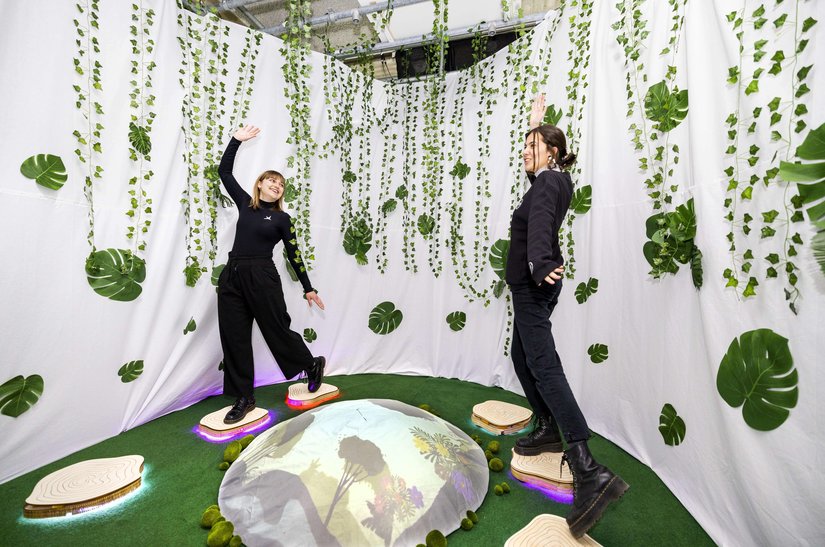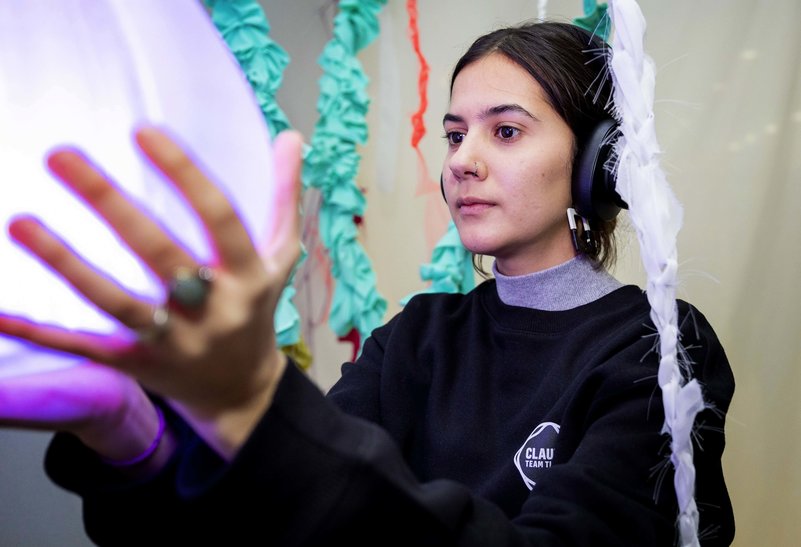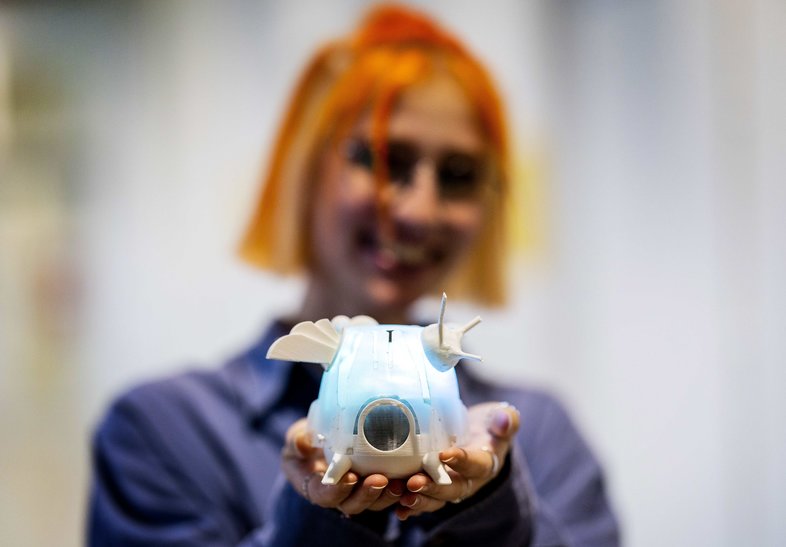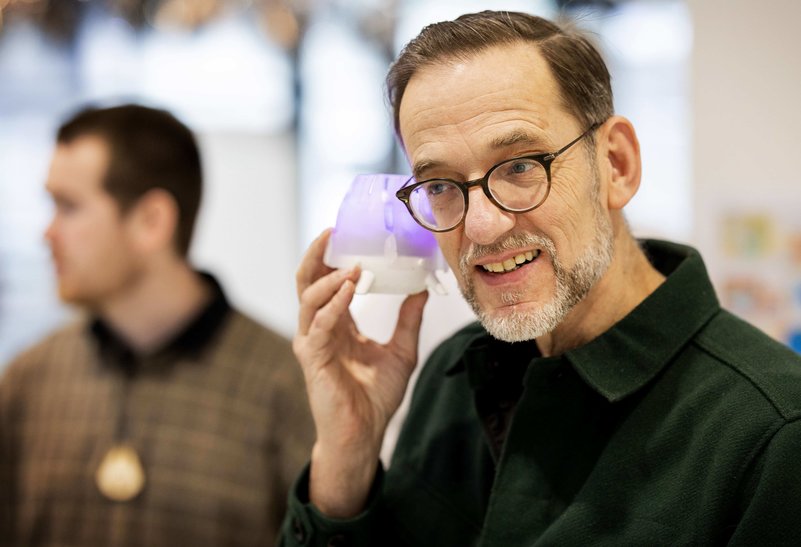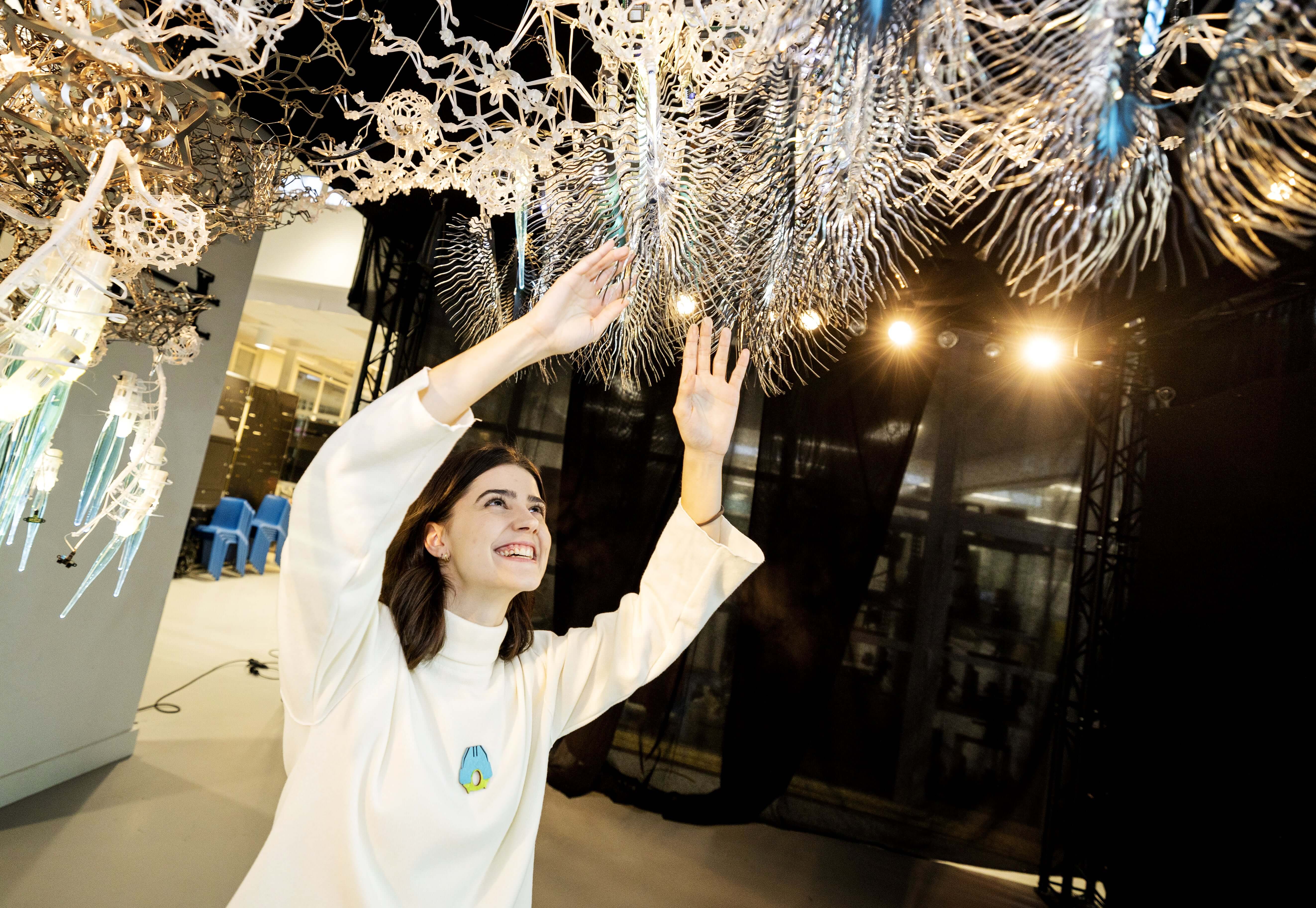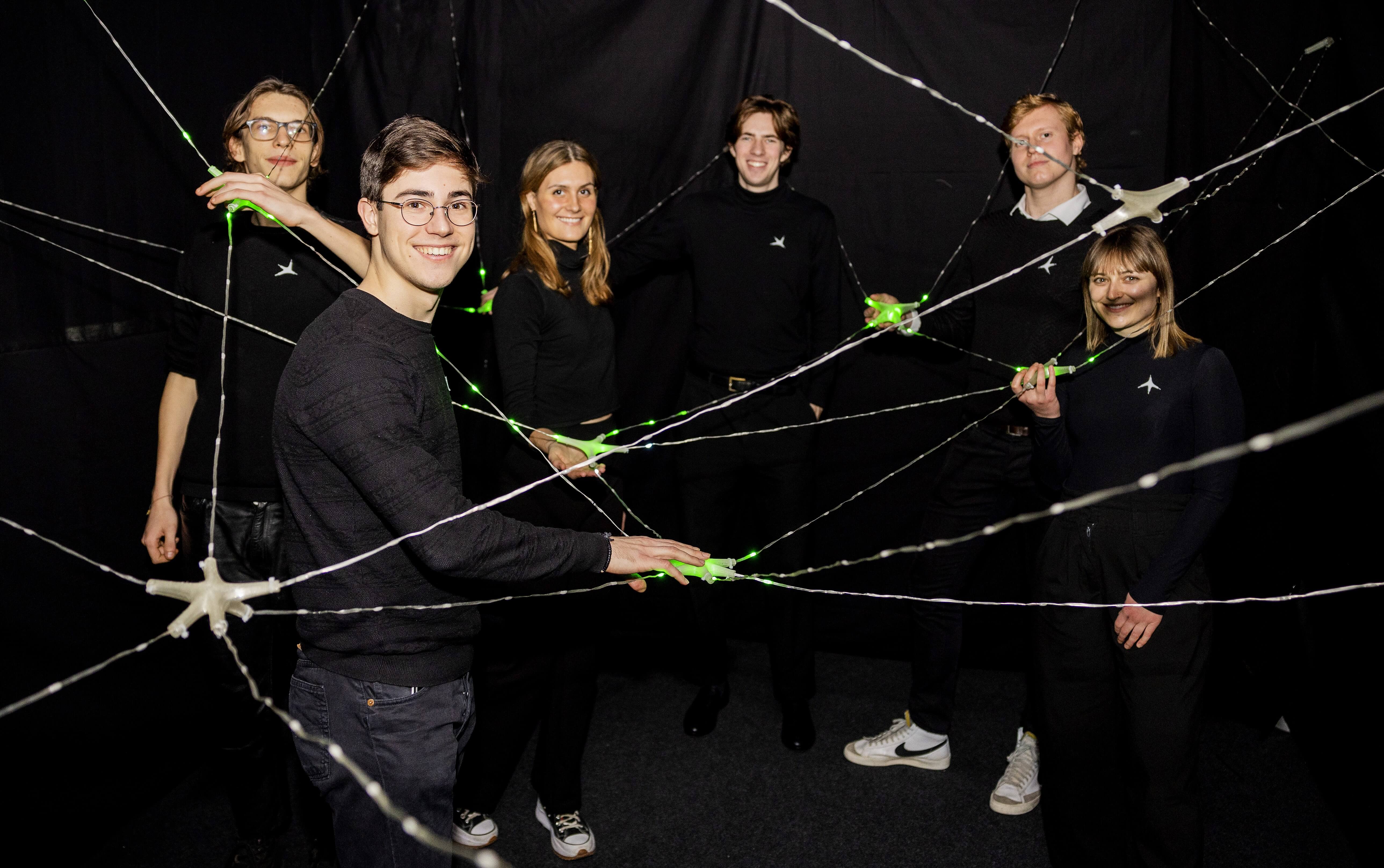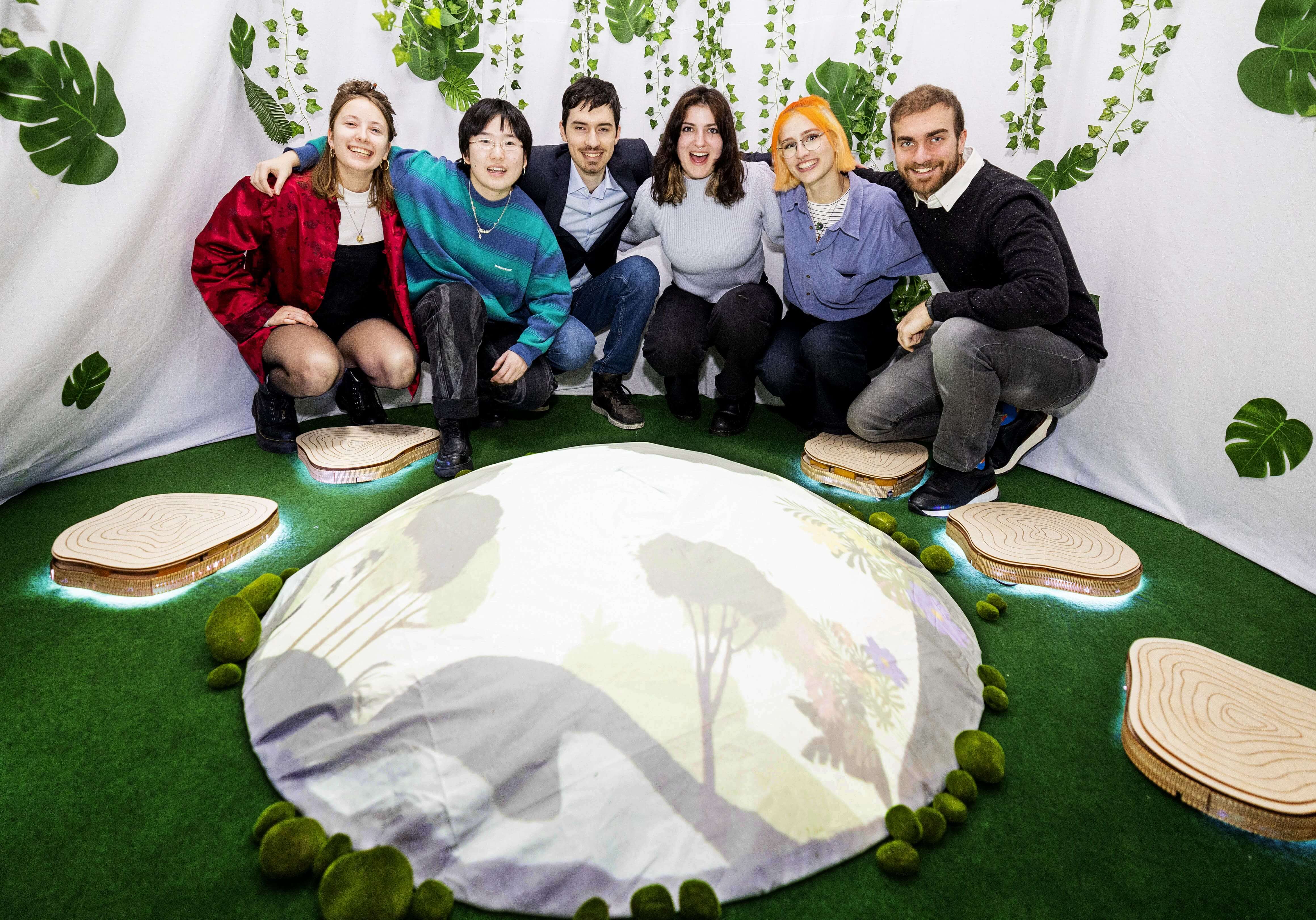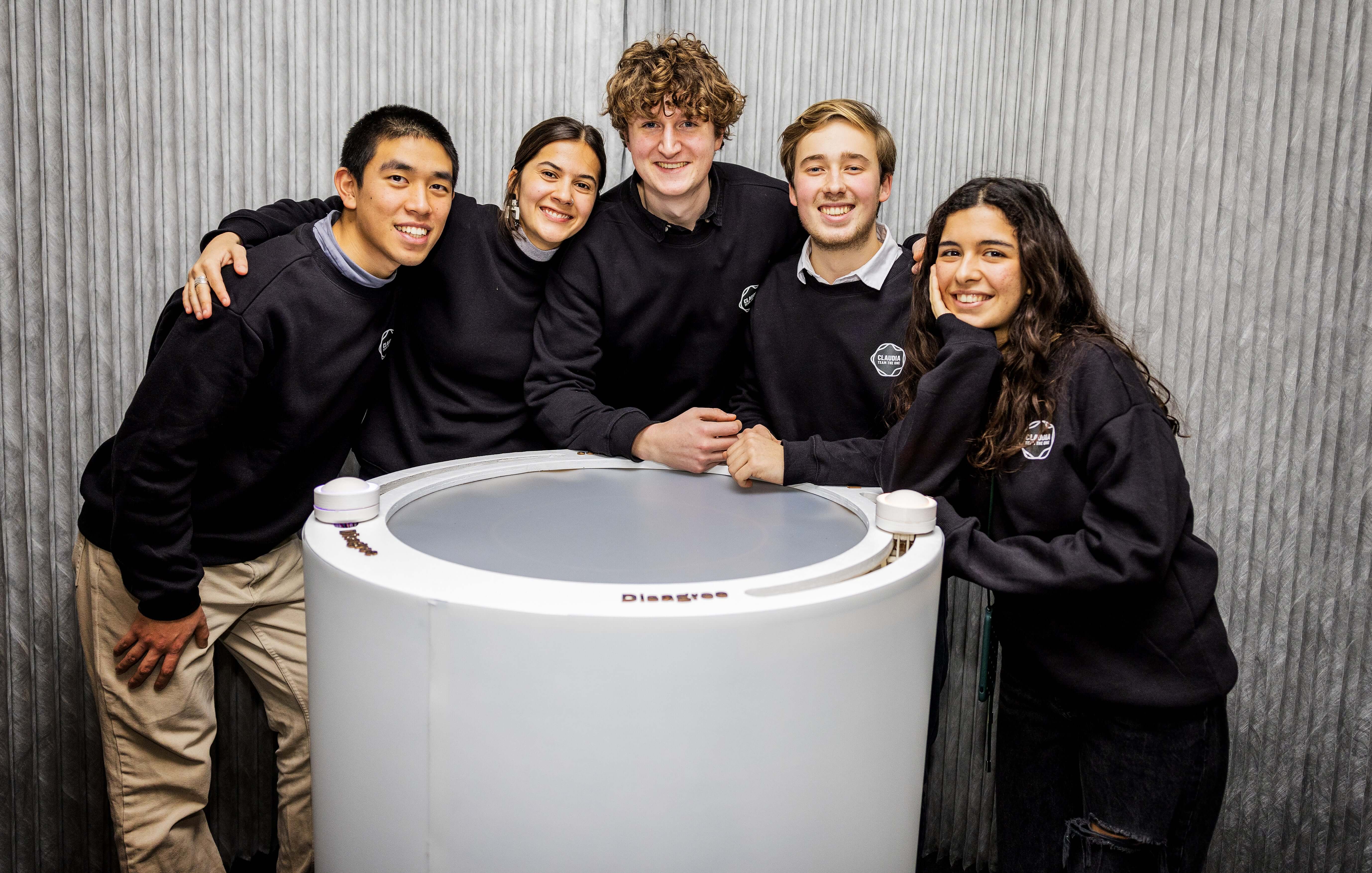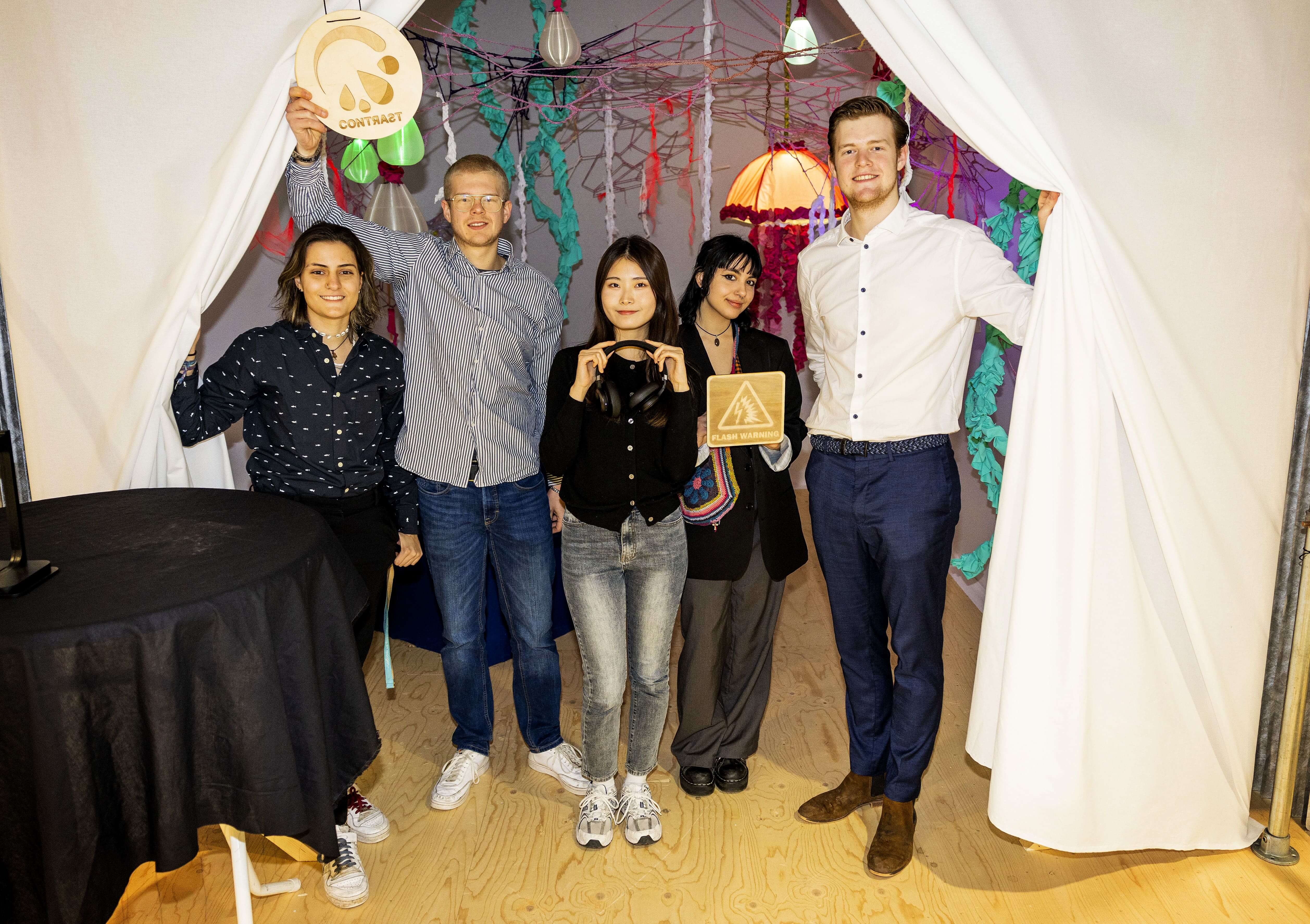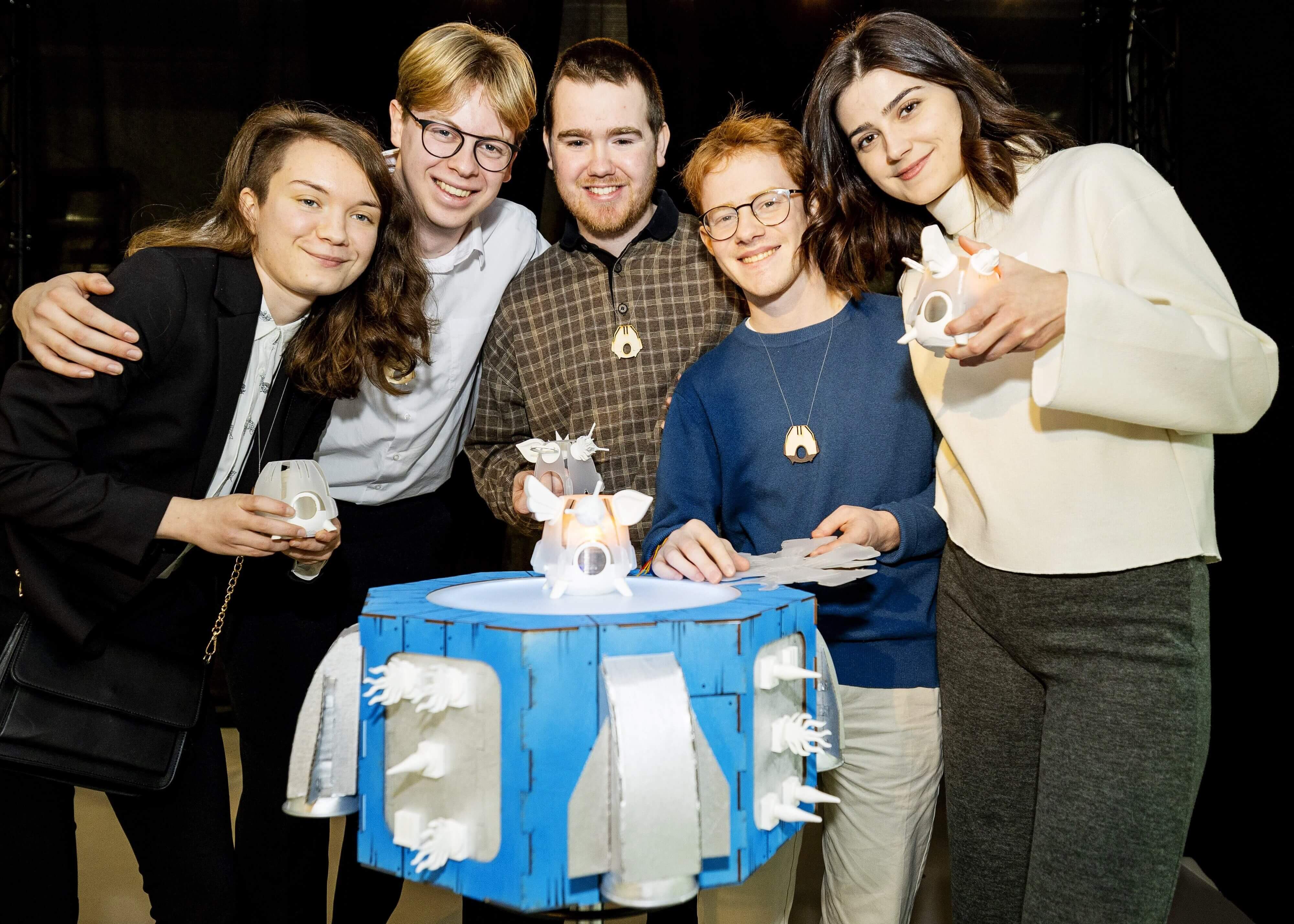From Complexity to Meaningful Interactions
Smart objects, humans, software. We are all part of the same complex environment. It is up to designers to create meaningful experiences for people within this environment. This was the assignment for the 30 students enrolled in the Interactive Environment Minor this year. Discover what they came up with.
Have you noticed? The world is becoming more complex. We as humans no longer only interact with each other. But also increasingly with a vast – and growing – group of smart objects. This interaction between humans and technology has become a world of its own, an ecosystem of relationships, transactions, dependencies.
But what does this ecosystem look like? What does it mean for us? And how can we interact with its elements in a meaningful way? The 30 students of the Interactive Environments Minor at the Faculty of Industrial Design Engineering have dived into these questions. On 25 January, they showcased their version of this artificial realm.
Meaningful experiences
“As designers, we need to better understand, come to terms with this growing complexity, and find the best possible ways to create meaningful everyday experiences for people with and within such complex artificial systems”, explains Aadjan van der Helm, lecturer of Interaction Design and coordinator of the Interactive Environments minor at the Faculty of Industrial Design Engineering.
“For their final project, we divided our 30 students into five groups. We asked them to design, prototype, test and install their project at the TU Delft’s Science Centre as part of an artificial ecosystem derived from Philip Beesley’s design principles.”
Developing living Architecture
Philip Beesley is a Canadian architect, artist and technologist, who for the past two decades has been creating experimental installations, exploring large-scale artificial ecosystems and developing living architecture.
One of his experiments is the Protopoietic Veil. You can see this installation in real life at the TU Delft Science Centre. It is part of a research and creation initiative together with TU Delft to develop architecture that approaches the qualities of living systems. This prototype ‘Proto’ serves as a foundation for an autopoietic system. An autopoietic system produces and reproduces its own elements and structures.
This veil is made of a filamentary triangulated skeletal framework and a system of interaction between software languages used to program responsive environments.
The Holozoic Science Centre
The installations of the students are connected to the Protopoietic Veil. Resulting in the ‘Holozoic Science Centre’ exhibition on 25 January. Meet the projects MIKE, Point of View, Claudia, Contrast and Dwallie.
Olaf, part of the MIKE team, explains: “We believe that people are disconnected from nature. Our installation is an immersive experience showing the interaction within mycelium, an underground network of fungi. Our brain basically works the same, but we chose mycelium as we liked it more as a story and it is less complex to showcase.”
Jafet of Point of View says: “Our installation shows animals and how they experience the world, as it is very different from our limited experience. For example birds see light and colours which we do not see. Tigers and frogs for example have their own traits. Our installation aims to help kids to explore this in an interactive way.”
Diana and Benjamin from Claudia tell us: “We want to spark interaction between people by asking them questions about AI. We used a pre-recorded voice who guides visitors through this experience. We used humour to trigger interaction between people who might not know each other. We also made sure the graphics were on point to visualise peoples opinion instantly.”
Izzy, who worked on Contrast says: “It is interesting to explore technology from the fun side. With our installation we aim to influence how people feel when they connect with its sound, its surroundings. We don’t want to push the visitor in a certain direction as some people feel calm when they are busy and the other way around.”
Jeroen and François from Dwallie conclude: “We wanted to connect all the great installations here. Dwallie is your companion through this exhibition. You can interact with him, the relationship is symbiotic. We are different from the other projects but we also connect them, which we think is a great addition.”
Interactive Environments Minor
Interactive Environments is a third-year bachelor’s minor taught by the Faculty of Industrial Design Engineering. It is open to students from across the university and beyond. “This results in multidisciplinary teams,” says Aadjan van der Helm. “The range of knowledge and skills enables students to tackle design challenges from various perspectives and learn from one another. It will also come in handy for their future careers as they will most likely will work in teams with a great diversity in skills.”
During the minor the students were coached by: Govert Flint, Martin Havranek, Dieter Vandoren and Wim Schermer.
(Pictures by Guus Schoonewille)
